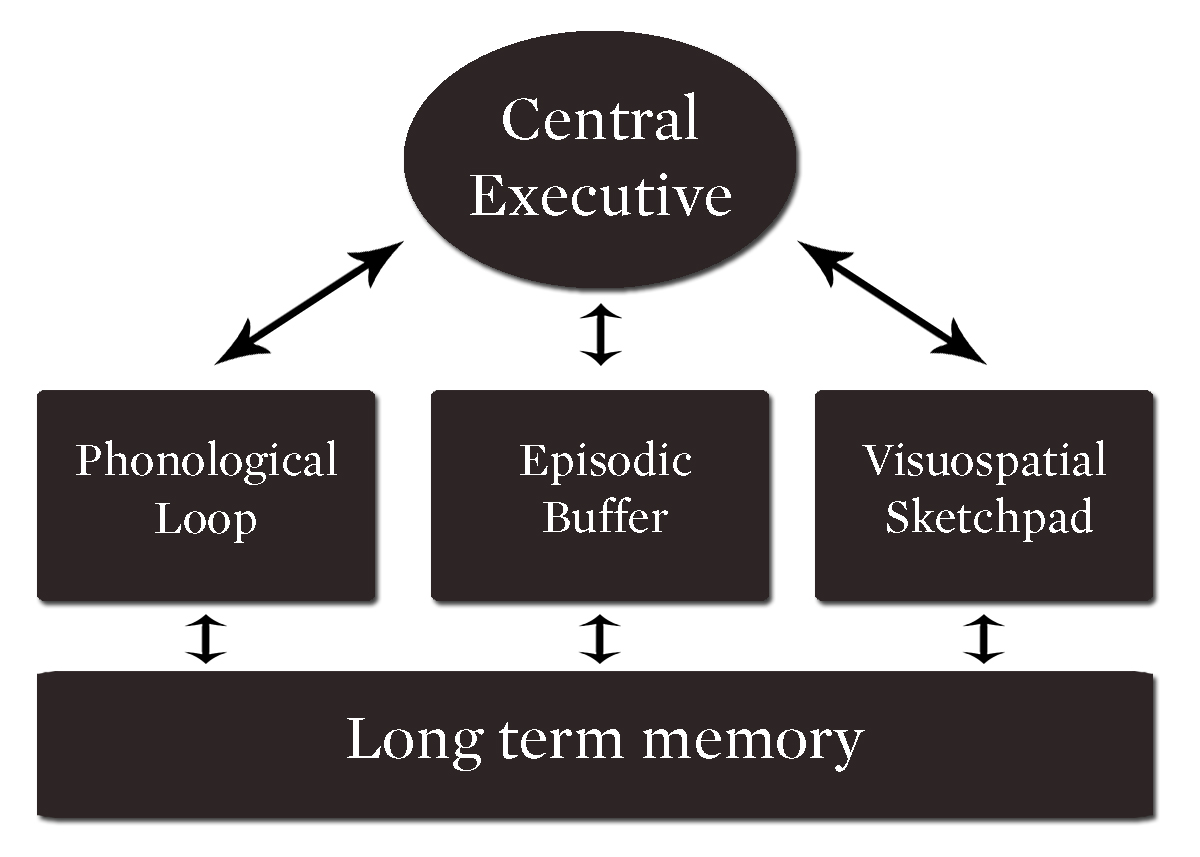Working memory is like your brain’s scratch pad, managing information as you go about your day. But our routine deluge of information can make us feel scatterbrained, like our working memory has too much to deal with. Here’s how to tune-up your working memory and stay focused.
This post originally appeared on the Crew blog
Sometimes when I’m trying to focus on a single task my mind can feel a bit like a pinball machine. No matter how hard I try to keep my thoughts in focus there’s all these ideas wildly bouncing around and beating away at my limited attention.
Our brains can be fickle things and I’m sure every last one of us has experienced moments where we just can’t seem to hold on to an idea for more than a few seconds.
All of a sudden while you’re working on a project you start thinking about what you’re going to make for dinner or a conversation you had with a friend a few nights ago. It’s frustrating. All we want to do is focus on what we’re working on and block out the rest. So how come these unwanted thoughts keep coming into our heads?
What Is Working Memory?
When we hold information and manipulate it in our mind for any length of time we’re engaging what cognitive neuroscientists call Working Memory.
If you’ve ever had to remember a phone number between the time of hearing it and dialling, or remember driving instructions while you look for specific landmarks (“take the first right then go straight until you see the big yellow sign and then it’s the third building on the left…”) you’ve used your working memory.
In situations like these, not only do you need to keep certain bits of information fresh and ready in your mind, but you also need to work with them and put them into the context of the real world.
You can think of it as the brain’s search engine, or a blackboard where you temporarily store relevant information while you’re using it. It’s not just for basic instructions, however. The last time you wrote a blog post or article, working memory is what allowed you to hold on to the information you absorbed during your research and then choose what fitted best for your piece.
The problem is that our working memory can only hold a finite amount of information and is bombarded constantly by new thoughts and sensory experiences all trying to distract you from the task at hand.
And research suggests a close link between the working memory capacity of a person and their ability to control the information from the environment that they can selectively enhance or ignore.
In other words, the greater the working memory capacity, the greater the ability to resist distractions and stay focused on the task at hand.
How Working Memory Actually Functions
The idea of what we now call working memory has been around since the 1890s, but our understanding of how it works has changed over the years.
The most current theory proposed by psychologists Alan Baddeley and Graham Hitch suggests there are multiple ‘buffers’ where information is stored, which are controlled by a supervisory system called the Central Executive.
The Phonological Loop
Remember when I mentioned trying to recall a phone number? You most likely “heard” your inner voice practicing the sequence over and over in what’s called the phonological loop.
When information is heard, we transform it into a sound-based “code”. Then, to prevent this information from decaying, we actively rehearse the code, “speaking” with our mind’s voice and “listening” with the mind’s ear in a continuous loop, like an internal echo-box.
But things fall out of the loop quickly, which is why longer sequences are harder to remember. As we reach the end of the sequence, the first few items are usually already gone. American psychologist George Miller quantified the limits of our working memory in his paper The Magic Number Seven, Plus or Minus Two, where he suggested that on average most people can only hold seven ‘items’ of information in their working memory at one time, though there are techniques to improve memorisation.
The Visuospatial Sketchpad
Picture in your mind a room you know well (it could even be the one you’re in). Now close your eyes and name the objects along the wall from left to right. As you look around the space using the mind’s eye, you’re engaging the visuospatial sketchpad — the part of working memory that allows you to develop, inspect, and navigate through a mental image.
While the phonological loop deals with sounds and verbal commands, the sketchpad is concerned with visual memory.
The Episodic Buffer
Although not part of the original model, in 2000 Baddeley added a new component to his theory called the episodic buffer, which is dedicated to linking information and forming integrated units of visual, spatial, and verbal information with time sequencing. It’s what allows us to quickly recall the plots of novels or movies, or put larger chunks of data into context.
The Executive Control
Putting the work in working memory is the executive control — a system that ties the whole thing together and determines what information is retained and which buffer it should go in.
The executive control also integrates and coordinates information in the three buffers and, most importantly, provides a space where the information can be worked with and manipulated.

If you think of the three different buffers as bins holding your LEGO, the executive control is the board where you piece them together and build something new.
How To Optimise Your Working Memory
Working memory is one of the most important cognitive functions we have; it helps us through different key stages of our lives from learning the alphabet to understanding social situations, prioritising multiple activities, and meeting deadlines.
It’s even been shown to be a better indicator than IQ for future academic success, with 98 per cent of children with poor working memory showing very low scores on standardised tests of reading comprehension and maths.
So are there ways we can try to increase our working memory capacity? “Increase” may not be the right way to look at it — that is, we’re stuck with the brains we have — but you can optimise your health and environment to help you along the way.
Reduce The Stress In Your Life
Increasingly, studies have shown that stress can have a negative impact on our working memory. The more stress in one’s life, the lower the efficiency of working memory in performing simple cognitive tasks.
It’s a frustrating cycle. Losing focus and not being able to finish a project on time creates stress, which in turn lowers our capacity to regain and maintain focus. One way that has been shown to help us break out of this cycle, however, is to become more mindful.
A 2013 study out of the University of California, Santa Barbara, examined 48 undergraduate students who had been assigned either two weeks of mindfulness training or a nutrition course.
At the end of the experiment period, the students who had taken the mindfulness training showed increased working memory capacity and on average scored 16 per cent higher on reading comprehension tests not only compared to their own pre-study tests, but against their peers who had taken the nutrition course.
When you start to feel unwanted thoughts creep into your head, take a breather and empty your head, even for just a few minutes. It will help you regain your composure and control your focus when you return to your work.
Exercise More And Stay Fit
Working memory may also be increased by high intensity exercise.
An experiment conducted by exercise scientist Dr Christine Lo Bue-Estes and her colleagues looked at the effect of exercise on working memory capacity before, during, and after performing strenuous activities. The results showed that while working memory capacity decreased during and immediately after bouts of intense exercise, it increased following a short recovery period when compared to those who hadn’t exercised.
Just like hard exercise is good for increasing your general mental performance, it can specifically boost your working memory capacity as well.
Learn New Skills Like Playing An Instrument
In Swedish physician Torkel Klingberg’s book The Overflowing Brain he proposes that working memory can be enhanced through exposure to excess neural activation. Klingberg’s research showed that the more we practise a certain skill, the larger the area of the brain activated by that particular type of sensory experience.
For example, the area of the brain activated by the sound of a guitar will be larger in a player than it is in a non-player.
Not only will you be able to hold more information in your working memory but practicing your new skill can also help train you to ignore distractions and stay focused — the benefits of which transfer to other tasks.
It’s important to note that like many parts of the inner workings of our brain, working memory is still a field we don’t fully understand and one that has relationships with a multitude of different cognitive tasks.
What we do know is that our brain has a limited capacity to hold on to information during a task and has a hard time deflecting distractions (as anyone trying to hit a deadline has surely experienced).
In the end, whatever we can do to increase this capacity — whether it’s exercising vigorously, learning a new skill, or practicing mindfulness techniques — helps us stay focused and quiets all those other millions of things trying to take away our attention.
Put your memory to work [Crew Blog]
Jory Mackay is a writer and editor with Crew, a creative marketplace connecting mobile and web projects with vetted, handpicked developers and designers.
Image adapted from Hein Nouwens (Shutterstock)

Comments